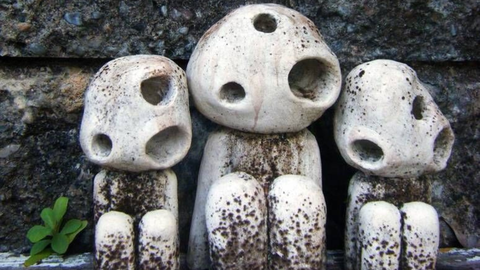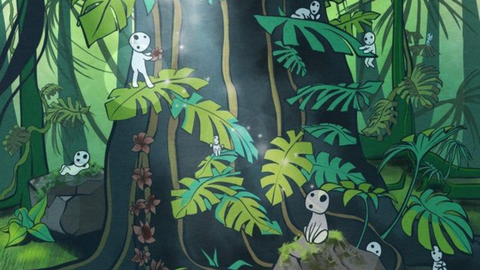thingiverse.com on pinterst
One of the best known aspects of Japan is its strong bond with nature and respect for the animal creatures that inhabit it: we all know the great forests and mountains scattered across this eastern island, right? Other very famous Japanese sides only the strong spirituality and the large number of mythological creatures that are part of the folkloristic tradition and that have very ancient and very deep roots in the cultural fabric. These two elements are strongly connected to each other and the link between nature and the supernatural is still quite strong and felt today: and here in the great range of mystical creatures there are several connected to the most disparate aspects of the Earth and of everything that it concerns. The Kodama, the spirits of the trees, are famous exponents of this category also widely present in media works that have increased their popularity: if you do not know what we are talking about and want to learn more about these fascinating creatures then all you have to do is stay with us.
Kodama: the origins
It is difficult to trace the etymological origins of the term Kodama and its first linguistic implications: it seems that the first kanji to indicate these entities was born from the combination of three characters chosen for their sonorous rather than morphological value, making it rather cryptic. translation. Subsequently, a combination of signs was opted for which can be roughly translated as “tree spirit” or “tree soul”, but not only: there is another kanji to indicate the Kodama and can be translated as “echo”, in reference to the widespread popular belief that the sound of falling trees is actually the cry of this creature. But what are the kodama and where do they come from? These are essentially spirits that inhabit trees and at the same time represent the “perceptible” extension of the soul of these natural elements. However, highlighting their origin is a much more difficult operation: the first reference to these figures seems to go back to Kojiki, a text written at the beginning of the eighteenth century by Ō no Yasumaru and considered the first example of narrative in Japanese history, as well as one of the most ancient originating from the land of the Rising Sun. However, the use of the term Kodama seems to have its origin in the text Wamyō ruijushō, a detailed dictionary that indicates the kanji of the term as the equivalent of “spirit of the trees”.
The kodama in the first Japanese novel
A further extremely useful literary reference is constituted by Genji monogatari, that is the work considered the first modern novel in the history of Japan: in this text written in the eleventh century, the author Murasaki Shibiku uses the term kodama with the aim of indicating a species of “abode for goblins” obtained inside a tree: it is interesting to point out that already in this historical period the association between the word and something (of an undefined nature) that dwells inside the plants is very strong and rooted .
Kodama: appearance and characteristics
It is difficult to describe the appearance of the kodama because in fact there is no codified version of these creatures: after all, the spirits as such generally do not have a specific form and it is rather the cultural tradition of reference that defines it from time to time. The most ancient legends identify them as invisible entities or otherwise impossible to distinguish from normal trees. A turning point is represented by Toriyama Sekian and his book Gazu hyakki yagyō: analyzing the main folkloric creatures of his people, he comes to describe the kodama as spirits with the appearance of men or women who stop standing near the plant they belong to. .
the kodama in popular culture
Thanks to their ancient tradition and strong adherence to the social and cultural fabric, the kodama are one of the best known figures even outside the Japanese borders thanks to their massive use in the most disparate media products such as films and card games. In the video games Nioh and The legend of Zelda: Breath of the wild, for example, they are represented respectively as small green beings and tiny creatures with a leaf on their head that they use to get carried away by the wind. Even the hugely popular Pokemon franchise hasn’t been immune to these creatures, coining some largely inspired by them like Celebi, Trevenant, and Phantump.
The kodama in Princess Mononoke
If today the West knows the figures of the kodama, a large part of the credit must be attributed to Princess Mononoke, the famous film by Hayao Miyazaki released on the market in 1997. In this film, whose main theme is the sadly inevitable clash between man and nature , a fundamental role from the symbolic point of view is played by the kodama: these beings find a representation (which later became very famous) that sees them as small anthropomorphic beings of white, almost transparent color. They are used for the protection not only of the tree of which they are the spiritual extension but also of the whole surrounding area: unfortunately during the film they tend to gradually disappear, representing the brutal oppression of nature by the human being.
This content is created and maintained by a third party, and imported onto this page to help users provide their email addresses. You may be able to find more information about this and similar content at piano.io
How the kodama have become famous even outside the Japanese tradition



